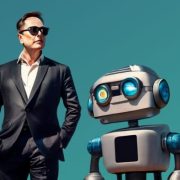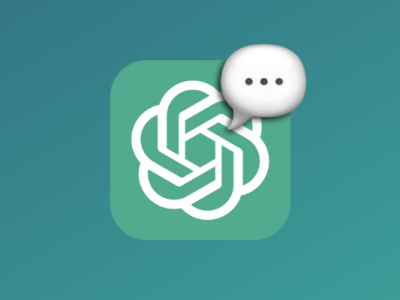Artificial Intelligence (AI) has emerged as a revolutionary force in today’s fast-changing business landscape, transforming how firms operate and revolutionising industries. AI is crucial to contemporary corporate strategies, driving efficiency, innovation, and competitive advantage. It is no longer a future concept but a game changer for businesses. Read the blog till the end: “Revolutionising Industry: How AI Changes the Game for Businesses.”
Revolutionising the Industry with AI Solutions
AI is helpful and supports iterative processes, freeing up human intelligence to tackle more challenging issues. It has been visible in many industries with the rise of generative AI and prompt engineering. Moreover, it simulates human intelligence for analysing data, understanding and learning natural languages, recognising behavior and patterns, etc.
What is Generative AI?
A question of the decades ‘What is Generative AI?’ Due to its multi-facet application, its use is increasing rapidly. Generative AI is a “Novel approach” for organizing competitive neural networks in seconds. It was first introduced in the 1960s in chatbots, but Ian Goodfellow familiarized GANs in 2014. It is a kind of artificial intelligence, a deep learning technique that can produce various content, including text, imagery, audio, codes, and synthetic data. The applications (that are using Amazon Web Services (AWS)) used by this high-performance infrastructure are:
- Data Analytics
- Machine Learning
- Cloud Computing
In response to the prompt, various AI algorithms then return new content, which includes essays, problem-solving techniques, or realistic fakes created from a person’s images or audio. Early iterations of generative AI required data submission through an API or another complicated procedure. Developers must become familiar with specialized tools and create applications using programming languages like Python.
Generative AI models combine various AI algorithms to represent and process content. Transformer-based deep neural networks made natural language inputs possible, including Bard, LLaMA, Stable Diffusion, ChatGPT, Bing Chat, Mid-journey, and DALL-E.
History of Generative AI?
AI’s historical analysis revealed its origin in 1956, when a research workshop at Dartmouth College, USA, established AI as an academia. Since then, its development had questions on ethical aspects and potential dangers to humankind. The statistical and generative models are at the forefront of machine learning, the basis of AI development.
Later, in 2014, major breakthroughs in Variational Autoencoder and Generative Adversarial Networks produced the essential deep neural networks. These could learn more generatively than the discriminative models of complex data in images. Then, in 2017, the Transformer Network further added to the development of Generative Pre-Trained Transformer, GPT in 2018, followed by the GPT-2. The consecutive developments also kept the associated concerns.
Rise of AI – Is It Taking Over the World?
AI is now being utilized in several industries, but the new influx of AI and its misuse is also dubbed as dangerous. However, notable individuals like Elon Musk, Bill Gates, and Mark Zuckerberg have also been alarmed about the threat of uncontrolled AI development. Many experts believe there should be a limit & checks to its development, or it may endanger the planet. Some of the leading businesses with its uses include:
- Healthcare
- Marketing
- Factories
- Logistics
- IT
How Does Generative AI Work
The Generative AI takes a jump start with a prompt providing different directions while carrying out its tasks. The prompt could be in the form of musical notes, images, texts, or designs. The AI then answers accordingly to the best of its knowledge. The results might vary from industry to industry.
However, it is a significant development because early versions required input in the form of API or maybe other complex mechanisms. User-friendliness is the prime advantage of the current version of AI. Better user experience is the spearhead of AI development by different companies.
Generative AI Application
Generative AI models are capable of producing outstanding results in domains such as:
Images: Generates life-like images of people, objects, or sceneries.
Texts: Writes some of the best content in natural and different languages.
Code: Developers find it helpful as a consultant when writing complex coding
Speech: There are quite many experiments underway to generate human-like speech with generative AI
Other implications include:
- Chatbot implementation for customer service
- Deepfake deployment
- Enhanced dubbing
- Photorealistic art creation
- Medical related suggestions
- Advisory in improved chip designs
Different companies are in this business with tremendous success, such as:
Google Bard: The Bard is also one of the leading AI tools. The Google Bard is a lighter version of its Language Model for Dialogue Application (LaMDA) network. However, Google rushed its launch and faced negative feedback due to incorrect answers, which occurred because it was still in its final stages of development. Now, Google has launched a better version built on the latest large Language Model (LLM), PaLM2 (language model), for enhanced performance.
ChatGPT: It took the stage by storm in 2022. Its initial version, GPT 3.5, was quite capable and is still being used. The GPT 4, launched in March 2023, is a paid version and is still being enhanced. But both are quite capable of generating a range of accurate results. Simulating a real conversation with the user is its true miracle.
Dall-E: It mainly developed using large data, including texts and images. The multimodel AI application provides results across several platforms, such as audio, vision, and text. Its first version was developed in 2021 using Open AI`s GPT. The latest version, released in 2022, is much more enhanced. Users can generate imagery in diverse styles using prompts.
To Wrap It Up
AI has a huge potential for IT development, allowing it to achieve new heights at much faster rates. Traditional AI solves particular tasks using predefined rules, while generative AI focuses on creating innovative data and content using unsupervised learning models. Moreover, generative AI can create synthetic consumer profiles without violating privacy laws. The revolution aids in testing and developing models for personalized marketing, behavior prediction, and customer segmentation.















Comments